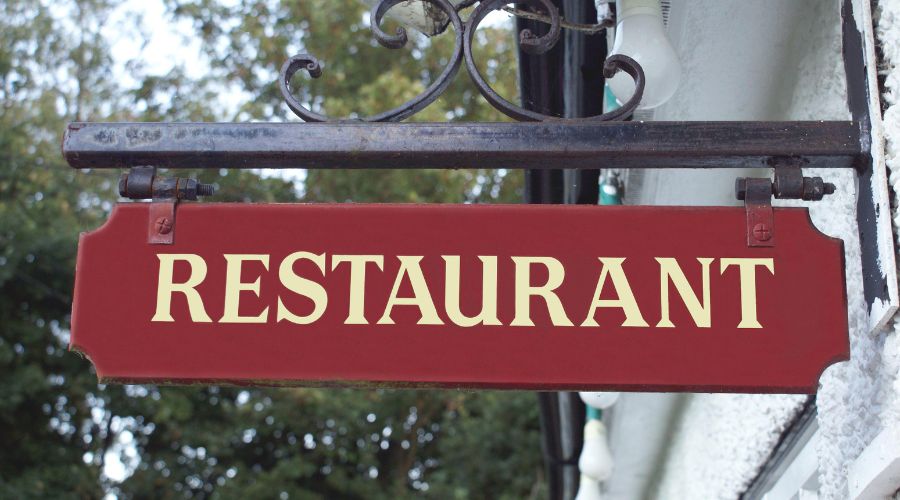Did you know that 80% of Australian restaurants with strong branding stand out? They build a loyal customer base and drive success. Effective branding is key.
In this guide, we’ll cover the basics of successful restaurant branding. We’ll talk about defining your brand identity and creating a consistent look. We’ll also show how to use social media to connect with your audience. These strategies will help your restaurant brand shine in Australia.
Key Takeaways:
- Good restaurant branding is more than a name or logo. It shows your values, personality, and dining experience.
- It’s important to regularly check and update your branding. Use social media, customer feedback, and local partnerships to stay connected.
- Your brand’s identity goes beyond the food. Interior design and packaging help people recognize and remember your brand.
- Make sure your services and operations meet your target audience’s needs. This helps you communicate and tailor your offerings.
- Use your brand’s visual elements, like logos and colors, consistently. This helps customers remember and recognize your brand.

Understanding Restaurant Branding
What is Restaurant Branding?
Restaurant branding is more than just a name or logo. It’s about creating a brand that shows a restaurant’s values and personality. It’s about making a memorable experience for customers. A good brand helps a restaurant stand out and keep customers coming back.
Creating a strong visual identity and a great brand experience is key. This includes the look and feel of the restaurant, as well as how food is packaged. Every detail helps shape the brand in customers’ minds.
| Key Elements of Effective Restaurant Branding | Benefits |
|---|---|
|
|
Investing in a solid branding strategy helps restaurants communicate their unique value. It builds strong relationships with customers. This leads to long-term success in the food and beverage world.
Why is Restaurant Branding Important?
Restaurant branding is key to success. It guides everything from menu choices and location to culture and customer service. A strong brand can bring many benefits to your business.
A good brand creates memorable dining experiences. It connects your ambiance, service, and menu, making guests feel special. This loyalty is vital in the competitive restaurant world.
Strong branding also makes your operations smoother. It helps in making decisions, from marketing to menu planning. This leads to better customer experiences and a stronger market position.
Moreover, a strong brand sets you apart from competitors. You can charge more without losing customers. People are willing to pay more for experiences that match their values.
“Branding is what people say about you when you’re not in the room.” – Jeff Bezos, Founder of Amazon
The value of restaurant branding is huge. It builds a loyal customer base, improves operations, and gives you an edge. As the industry grows, branding will be crucial for success.
Defining Your Restaurant’s Brand
Creating a successful restaurant brand involves answering key questions. You need to know your values, target audience, and how you operate. Knowing who you serve and what makes you different is key to your brand’s identity and personality.
Your brand’s voice should match its mission and values. It should also meet the needs of your audience. Doing a competitor analysis helps you find what makes you unique. This way, you can create a strong visual brand.
Crafting a Compelling Brand Identity
A strong restaurant brand identity comes from your personality, values, and what you offer. To define your brand, consider these steps:
- Know your restaurant’s core values and how they match your audience’s preferences.
- Create a unique brand personality that connects with your customers and differentiates you.
- Clearly state your unique selling proposition – what makes you special and what you offer.
- Use a consistent brand voice that shows your personality and talks directly to your audience.
By focusing on these elements, you can build a brand identity. This identity shapes how customers see and experience your restaurant.
Conducting Competitor Analysis
Understanding your competitive landscape is key to standing out. Research your competitors, find their strengths and weaknesses, and see how you can offer something unique to your audience.
| Competitor | Strengths | Weaknesses | Unique Offerings |
|---|---|---|---|
| Restaurant A | Extensive menu, strong brand recognition | Inconsistent service, limited seating | Specialty cocktails, live music on weekends |
| Restaurant B | Cozy atmosphere, popular for weekend brunch | Restrictive dietary options, limited operating hours | Locally sourced ingredients, family-friendly activities |
| Restaurant C | Innovative menu, trendy decor | High prices, limited parking | Customizable dining experiences, sustainable practices |
By knowing your competition and finding market gaps, you can create a unique restaurant brand identity. This identity will stand out and connect with your target audience.
Restaurant Branding
In the food and beverage world, standing out is key. A strong restaurant brand is crucial for success. It’s about blending different brand elements into a unified look and message that customers love.
A restaurant’s visual identity is at its core. This includes the logo, colors, and overall look. A consistent visual identity makes a restaurant memorable and unique in a crowded market.
Brand messaging is also vital. It shapes the restaurant’s personality and connects with its audience. Every message, from menu descriptions to marketing, should tell the restaurant’s story and values.
Being consistent is essential in branding. All brand touchpoints, from the physical space to the online presence, must match the restaurant’s look and message. This builds trust and recognition with customers.
| Branding Element | Importance | Example |
|---|---|---|
| Logo | Serves as the visual cornerstone of the brand, ensuring instant recognition. | McDonald’s golden arches are an iconic and instantly recognizable symbol. |
| Color Palette | Evokes specific emotions and associations, contributing to the brand’s overall aesthetic. | Starbucks’ use of green and white creates a calming and refreshing atmosphere. |
| Imagery | Captures the essence of the brand and helps to tell its story visually. | Subway’s use of fresh ingredients in its imagery reinforces its brand positioning. |
| Messaging | Shapes the brand’s personality and connects with the target audience. | Chipotle’s “Food with Integrity” slogan aligns with its commitment to sustainable and ethically sourced ingredients. |
By combining these restaurant brand elements, places can create a memorable brand experience. Whether through a great logo, strategic colors, or a compelling story, good branding attracts loyal customers and drives success.
Interior Design: Creating a Memorable Atmosphere
Ambiance and Aesthetics
The heart of a great restaurant is its interior design. It’s all about creating a vibe that matches the brand and speaks to the audience. Colors, fonts, lights, and decor all play a part in making a restaurant’s personality shine.
Having a clear theme is key in restaurant design. It could be classic or modern, but it must fit the brand and food. This unity between look and feel strengthens the brand’s image in customers’ minds.
Lighting is crucial for setting the mood. From soft candlelight to bold shadows, the right lights can change everything. Fine dining likes bright contrasts, while casual spots prefer softer lights for a cozy feel.
The layout of a restaurant also shapes the experience. Open spaces bring people together, while cozy spots offer privacy. Finding the right mix of space and comfort is vital for a memorable visit.
Adding natural elements like plants and earthy colors brings warmth and texture. These touches not only look good but also make the experience more memorable and true to the brand.
In the end, a restaurant’s design must capture its brand’s spirit. By carefully designing the atmosphere, owners can create a deep connection with their guests. This connection is what sets a restaurant apart in a crowded market.
Takeaway Packaging: Extending Your Brand
In today’s world, takeaway packaging is a great way for restaurants to show off their brand. It lets them share their identity and values with more people. The packaging should have the restaurant’s logo, colors, social media, and website. This makes sure it looks good and matches the restaurant’s style.
Good restaurant takeaway packaging is like a moving ad. It helps spread the word about the restaurant’s brand identity and values. It also gets people talking about their meals on social media.
Most people, 73%, like containers that are good for the planet. The packaging world is now all about being sustainable. It’s also important to keep the food safe and the branding consistent. This makes the takeaway experience better and keeps customers coming back.
Branded packaging helps people remember your restaurant. It can even make them think the food tastes better. The use of paper-based packaging and eco-friendly materials shows you care about the planet. It also makes your brand more appealing.
In the end, restaurant takeaway packaging is like a mobile ad. It makes your brand more visible and helps you stand out. It’s a smart move to make your brand stronger and connect with your customers on a deeper level.
| Key Benefit | Impact |
|---|---|
| Brand Visibility | Branded packaging serves as a walking billboard, increasing brand awareness and recognition. |
| Customer Loyalty | Consistent branding on takeaway packaging helps build and reinforce customer loyalty. |
| Sustainability | Integration of eco-friendly materials into branded packaging demonstrates a commitment to environmental conservation and brand appeal. |
| Customer Experience | Branded packaging makes the dining experience special and memorable, enhancing customer satisfaction. |

Crafting a Consistent Visual Identity
Creating a uniform visual identity is key for a restaurant brand to stand out. This includes the logo, typography, color palette, and brand imagery. Typography is especially important, as it shapes the brand’s look and feel. The right fonts and their use across designs should match the brand’s voice and what customers like.
Brand Style Guide
A brand style guide is a detailed document that outlines a restaurant’s brand identity. It gives clear rules for using these elements everywhere. This helps keep the brand’s look consistent, making it more recognizable and memorable.
By setting guidelines for typography, color palette, and brand imagery, restaurants can stay true to their unique look. This helps them connect with their audience in a meaningful way.
| Key Elements of a Brand Style Guide | Benefits of a Consistent Visual Identity |
|---|---|
|
|
“Establishing a clear brand identity can lead to increased customer loyalty and repeat business.”
With a detailed brand style guide, restaurants can ensure their visual identity is consistent and appealing. This helps build brand awareness, loyalty, and success.
Engaging Your Audience Through Social Media
Social media is a key tool for restaurants today. It helps them show their brand and connect with customers. By using Instagram, Facebook, and Twitter, restaurants can share their story and engage with people in new ways.
Showing a restaurant’s brand identity on social media is important. Good photos and videos of food, along with hashtags, make a brand stand out. Features like polls and user content build a community, increasing loyalty and engagement.
Social media also lets restaurants target specific groups, like locals or tourists, with social media advertising. This helps them reach more people and attract new customers.
Success in social media comes from being consistent and strategic. Posting regularly, like two to three times a week on Facebook, keeps people interested. Using new platforms like TikTok can also help reach younger Gen Z consumers.
In conclusion, social media is very powerful for restaurants. By building a strong brand, engaging with customers, and using advertising and content well, restaurants can grow and succeed in a competitive market.
Building Customer Loyalty with Exceptional Service
In the competitive restaurant world, keeping customers loyal is key to success. Great service is the foundation of a strong brand. It creates a consistent experience that customers love. By focusing on service quality, restaurants can keep customers coming back and even turn them into brand fans.
For service to reflect the brand, restaurants need to train their staff well. Training should teach the brand’s message and show how to serve customers right. When staff feels confident in their service, customer happiness can jump by up to 20%.
Using rewards and loyalty programs is another smart move. These programs can make customers come back up to 25% more. By offering points, free items, or special perks, restaurants build a strong bond with their customers.
In today’s world, technology is also key to improving the customer experience. Online ordering, easy reservations, and personalized emails can increase customer interaction by up to 15%. By staying in touch and listening to feedback, restaurants can keep customers for up to 20% longer.
To build loyalty, restaurants need to focus on service, empower their staff, and understand what customers want. By consistently offering a great experience, restaurants can turn customers into loyal fans. This leads to growth and success over time.
| Statistic | Benefit |
|---|---|
| Acquiring new customers can be up to five times more expensive than retaining existing customers. | Investing in customer loyalty can be a cost-effective strategy for restaurants. |
| Restaurant customer loyalty programs can increase sales by up to 30%. | Loyalty programs can drive increased revenue and customer retention. |
| Chipotle Mexican Grill gained 8.5 million loyalty program members in under a year, offering 10 points for every dollar spent and a free meal at 1,250 points. | Offering valuable rewards can rapidly grow a restaurant’s loyalty program. |
| Brands using gamification to engage customers experience a 47% increase in engagement and a 22% increase in brand loyalty. | Incorporating gamification elements can boost customer engagement and loyalty. |
Conclusion
Effective restaurant branding is key to standing out in the competitive culinary world. It helps build a loyal customer base in Australia. By defining your brand identity and creating a consistent look, you can make a lasting impression.
Engaging with your audience on social media and offering top-notch service are also crucial. These steps help create a brand that people remember and connect with.
Restaurant branding is more than just a one-time effort. It’s a continuous process that should guide your business. By using social media and focusing on customer loyalty, you can boost your restaurant’s success.
Building a strong brand identity and connecting with customers is essential. Consistently delivering great dining experiences will help your restaurant thrive in Australia’s competitive market. The journey of building a restaurant brand is exciting and rewarding.
We believe the insights in this article will guide you well in your culinary journey. It’s a roadmap to success in the hospitality industry.
FAQ
What is the importance of restaurant branding?
Restaurant branding is key to standing out in the culinary world. It builds a loyal customer base. It makes dining memorable, streamlines operations, and lets you price flexibly.
What are the key elements of successful restaurant branding?
Good branding starts with knowing your brand identity. It also means having a consistent look and engaging on social media. Exceptional service is crucial too. These parts come together for a strong brand.
How can interior design contribute to a restaurant’s branding?
Interior design is vital for branding. It sets the mood and improves the dining experience. The right colors, fonts, and images show off your brand’s personality.
Why is takeaway packaging important for a restaurant’s brand?
Takeaway packaging is a chance to spread your brand’s message. Good packaging can turn customers into walking ads. It also gets them to share their experience online.
How can social media be leveraged to enhance a restaurant’s branding?
Social media is great for building your brand and connecting with people. Use Instagram, Facebook, and Twitter to show off your brand. Share updates and talk to your followers.
How does exceptional customer service contribute to a restaurant’s branding?
Great service builds trust and shows respect. It makes your brand consistent and reflects your identity. Happy customers become your brand’s biggest fans.




